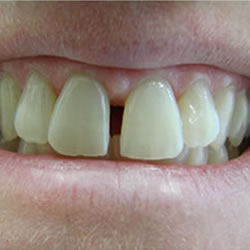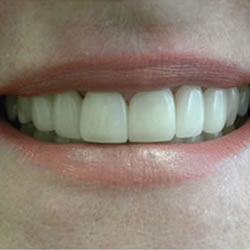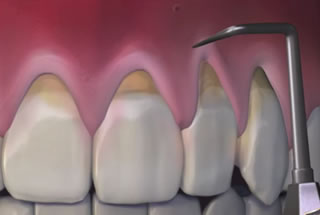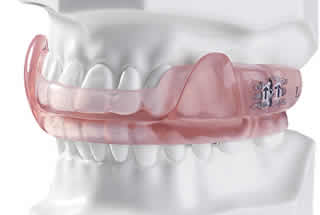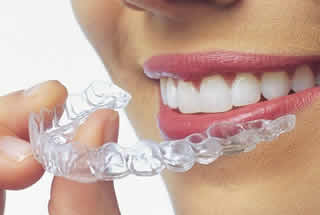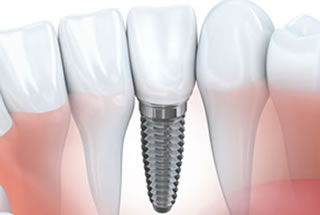A healthy smile is a valuable asset. Brushing, flossing, and dental checkups go a long way towards preserving your oral health. Dental sealants offer another level of protection. Most of the time, dentists recommend dental sealants for children and teens. In some cases, adults with a high risk for decay on back teeth and molars may need sealants.
What are dental sealants?
Made from clear plastic, dental sealants are applied to the pits and grooves of molars and premolars. The sealants form a barrier to food particles and enamel-eroding acids.
Why don’t dentists apply sealants to all teeth?
With good brushing and flossing habits, you can remove plaque and debris from the smooth surfaces of your teeth. The fissures and pits on back teeth are difficult to completely reach. Saliva, which helps naturally rinse away bacteria, isn’t very effective on these areas either, which makes the back teeth more prone to decay.
What’s the process for applying sealants?
It generally takes just a few minutes for each tooth. First, the dental team will clean and dry each tooth. Then, the dentist will paint the sealant material onto the chewing surfaces. Often, a curing light is used to harden the sealants.
How long do sealants last?
Usually, dental sealants hold up well under normal chewing and will last several years before you need any kind of reapplication. Make sure to brush and floss teeth daily to promote good oral health. During your exams, the dentist will check the sealants to verify that they don’t need replacement.
In many households, the bedtime routine is no fun. One of the trickiest parts for some parents is getting their kids to brush their teeth. However, it’s not a part of your child’s routine that should be skipped. To help make taking care of their teeth fun for children, here are some ideas for parents.
Toothbrushes
Provide your kids with fun toothbrushes! By choosing a brush decorated with their favorite character or color, your children will think of their toothbrush more like a toy than a dental tool. Consider getting more than one toothbrush, so each night they can choose the one they want to “play” with at the time.
Toothpaste
Children are picky about their toothpaste flavors just like their foods. Select toothpaste that you know your kids will like. Some of the flavor options include bubble gum and fruits, as well as the standby mint.
Floss
If they start flossing at a young age, your kids will likely view it as part of their oral hygiene routine all of their life. Try using some of the fun flossing tools on the market today, because they may help get your child interested in flossing. There are many colors and shapes to choose from, so keep trying until you find one that motivates your child.
Rewards
Enticing your children with rewards is often an easy way to encourage them to perform a task without arguing. Consider making a rewards chart and giving them a sticker each time they brush and floss. By the end of a week filled with good dental hygiene, a special reward will await them!
Millions of people wear some type of dentures, and most of them will likely say that it took some time to get used to them. Once you’ve replaced your missing teeth with dentures, you might wonder at first if you’ve made the right choice. But don’t worry, you most likely won’t regret it once you grow accustomed to your new artificial teeth. Here are some tips to help you get used to wearing your dentures more quickly.
Give it time
It takes time for your gums to heal and for you to feel comfortable with the dentures in your mouth. Don’t worry if they feel loose at first and move a little occasionally. After a week or two of wearing them, you’ll get used to them.
Practice
You may be self-conscious at first when talking with your new dentures, but practicing will help you master speaking with them in place. The more you talk, the faster you’ll get used to them. Some people are concerned their dentures will fall out while talking, but that is unlikely. Just keep practicing and you’ll be a pro in no time.
Expect to salivate more
It is common to produce more saliva than usual when you first start wearing dentures. This naturally decreases with time.
See your dentist
Your dentures might bother your gums for the first day or so, but if it continues you may need your dentist to adjust them. Be sure to visit your dentist when you experience discomfort or pain, so that you don’t develop a mouth ulcer or other problems. It’s normal for dentures to require adjustments occasionally.
It’s easy to come up with excuses for skipping your visit to the dentist. Maybe you’re too busy, can’t take time off work, or just don’t like going for a checkup. However, it’s time to put the excuses aside! There are some very important reasons for you to make seeing your dentist twice a year a priority.
Cleanings
The obvious benefit is that you’ll come away with a brighter, healthier smile. Tooth stains can be removed much better than you’re able to do at home, and plaque can be cleared away from hard-to-reach areas. Also, your dentist can remove tartar that you can’t get rid of yourself.
Gum disease
Your dentist will examine your mouth for signs of gum disease. It is the main cause of adult tooth loss, but can be reversed with proper dental hygiene if it’s caught early. Steering clear of gum disease can also benefit your overall health, because it has been linked to heart attacks and strokes.
Oral cancer
A screening for oral cancer will be performed at your dental visit. This painless scan of your mouth and tongue can save your life, as oral cancer is very treatable if found early.
Other issues
Your dentist will be able to watch for signs of any other problems that might be occuring that you haven’t even noticed. For example, a professional will notice wear on your teeth and determine if it’s a sign that you grind your teeth. Symptoms of temporomandibular joint (TMJ) issues might also be apparent to your dentist.
Role model
Don’t forget that any little ones in your household are watching you. Set a good example of regular dental visits and proper oral hygiene so that your kids will learn lifelong good habits as well.
Estimates suggest that 45 million Americans currently wear full or partial dentures. These prosthetic devices can close gaps in your smile, restore function, and improve your oral health. If you or a loved one is looking at full or partial dentures, you will need accurate information to make the best decision about how to proceed. The following Q and A will provide the basics about dentures.
Why do I need to replace missing teeth with dentures?
Even one lost tooth can create oral health problems such as shifting, uneven wear, and bone degeneration.
What is the difference between full and partial dentures?
Constructed from tooth-colored materials and placed on a gum-colored base, full dentures replace all the teeth on one or both arches. If you have remaining teeth, a partial denture can fill in the open spaces left by missing teeth. Partial dentures are held in place by inconspicuous metal clasps, while full dentures are secured with adhesives, suction, or implant posts.
Will everyone know I have dentures?
Advances in materials and technology allow your dentist to design a custom prosthetic that looks and feels similar to your natural teeth. After an adjustment period, most denture wearers find that they can eat the foods they love and smile with renewed confidence.
How do I care for my dentures?
With the right treatment, your dentures should provide years of beautiful smiles. Make sure you remove the device at night, soak your appliance in a cleaning solution, and store the denture in a secure location when it’s not in your mouth. If you need an adjustment or think something has broken, contact your dentist immediately. Attempting to fix your dentures at home could lead to further damage and additional expenses.
You’re sitting in your dentist’s chair for your checkup, and you hear the dreaded words that you have a cavity. Is it really a cause for panic? Modern advances in equipment and methods may surprise you about what really happens when you get a filling. Let’s learn what to expect if you need this procedure.
The first thing you and your dentist will discuss is the type of filling that is best for you. One choice is an amalgam filling. It is known for its durability, but contains a small amount of mercury which raises concerns among some patients. Another option is a resin composite filling, which is a newer material that contains more plastics. Many patients like this option because its white color is less noticeable in your mouth, but it lasts only about half as long as an amalgam filling.
The first step of the process is numbing the area, unless the cavity is very small and it’s unnecessary. First, the dentist will rub a topical numbing agent on the area, and will give you an injection after it takes effect. Many patients don’t even feel the injection after the topical numbing.
Next, the dentist will separate the area being worked on from the rest of your mouth using a rubber dam or a bite block. Once your mouth is ready, your tooth will be drilled and the decay will be removed.
The actual filling will be placed after the decay is gone. If you are receiving an amalgam filling, the hole will be filled with the metals. It will be pushed down to ensure all of the space is full, and then any overflow will be removed to make the tooth smooth. If you are getting a composite filling instead, the dentist will put some blue acid in the hole to create small holes for bonding the material. The acid is then rinsed, and a bonding agent is applied. Then the composite material will be added. A blue light will be used to harden and strengthen the material. Finally, the filling will be filed to make it smooth.

 E-Mail Us
E-Mail Us  416-595-5490
416-595-5490